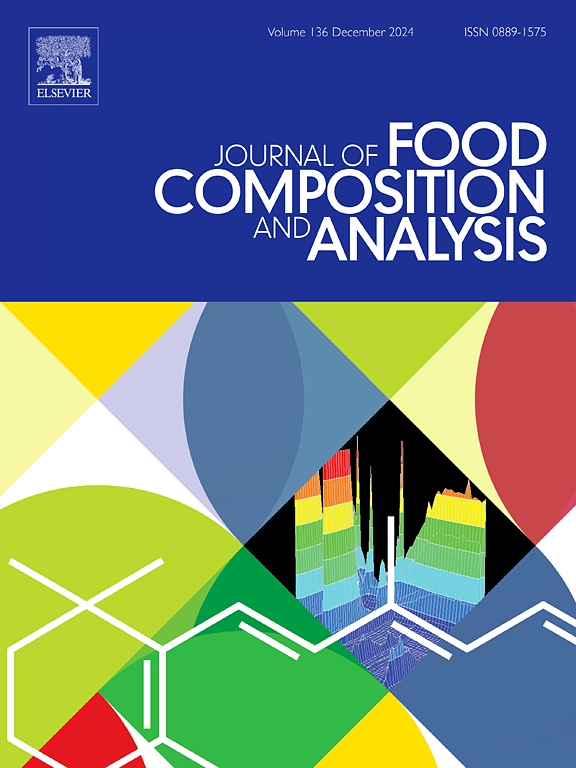Determination of potentially toxic elements in soil, river water and spinach samples from the Lesser Himalaya (Pakistan) by ICP-OES: Implications for food security and public health
IF 4
2区 农林科学
Q2 CHEMISTRY, APPLIED
引用次数: 0
Abstract
Potentially toxic element (PTE) contamination of soils, irrigation water and vegetables poses food insecurity and human health concerns. This study investigated PTE contamination in water, soil, and spinach from two agricultural areas, Baffa and Ichrian, in the Mansehra District of Pakistan. The cadmium (Cd), chromium (Cr) and lead (Pb) contents of the samples were determined using inductively coupled plasma-optical emission spectrometry (ICP-OES) to evaluate their contamination status and ecological risks, plant bioaccumulation factor (PBAF) and potential human health risks. The results showed that Baffa's water had higher Cd (0.77–2.93 µg L–1) and Pb (0.10–10.98 µg L–1) levels than Ichrian’s water, but was safe for drinking and irrigation according to guideline values. Soil concentrations of Cd, Cr, and Pb were higher in Baffa, with Cd levels surpassing global upper continental crust values in all samples and exceeding the recommended levels set by the Food and Agriculture Organization/World Health Organization (FAO/WHO) in 33 % of samples. Furthermore, the average Cd concentration in Baffa soils exceeded the European soil average. However, spinach PTE levels did not exceed guideline values. Contamination and ecological risk indices indicated moderate pollution in Baffa and low pollution in Ichrian, presenting moderate and low potential ecological risks, respectively. Based on plant bioconcentration factor analysis, minimal (<0.2) metal accumulation was recorded in spinach. The estimated daily intake (EDI) values revealed a metal ranking of Cr > Pb > Cd, with all values falling below the tolerable daily intake (TDI) levels, indicating no potential health risks. Target hazard quotient (THQ) and hazard index (HI) were below threshold level (<1), indicating no non-carcinogenic risk to the population. Although PTE levels in spinach were within safe limits, our findings emphasize the need for ongoing monitoring of PTE concentrations in soils and a broader range of vegetables, as cumulative exposure through consumption of multiple types of vegetables could exceed threshold limits, posing potential health risks.
求助全文
约1分钟内获得全文
求助全文
来源期刊

Journal of Food Composition and Analysis
工程技术-食品科技
CiteScore
6.20
自引率
11.60%
发文量
601
审稿时长
53 days
期刊介绍:
The Journal of Food Composition and Analysis publishes manuscripts on scientific aspects of data on the chemical composition of human foods, with particular emphasis on actual data on composition of foods; analytical methods; studies on the manipulation, storage, distribution and use of food composition data; and studies on the statistics, use and distribution of such data and data systems. The Journal''s basis is nutrient composition, with increasing emphasis on bioactive non-nutrient and anti-nutrient components. Papers must provide sufficient description of the food samples, analytical methods, quality control procedures and statistical treatments of the data to permit the end users of the food composition data to evaluate the appropriateness of such data in their projects.
The Journal does not publish papers on: microbiological compounds; sensory quality; aromatics/volatiles in food and wine; essential oils; organoleptic characteristics of food; physical properties; or clinical papers and pharmacology-related papers.
 求助内容:
求助内容: 应助结果提醒方式:
应助结果提醒方式:


